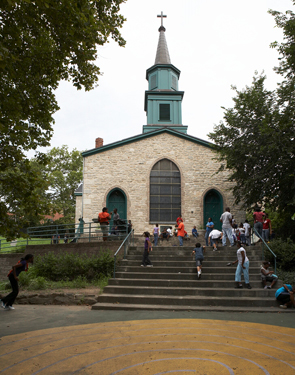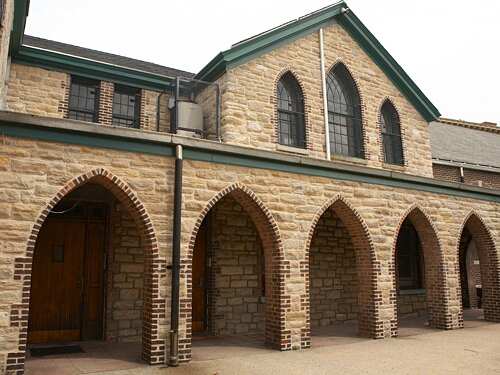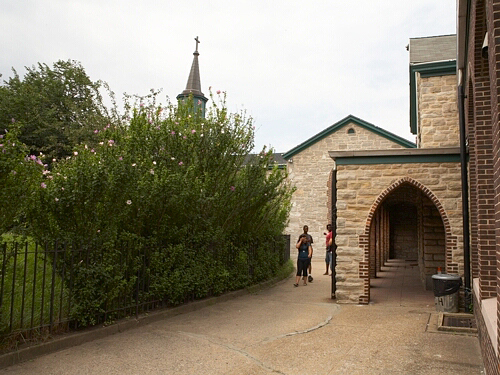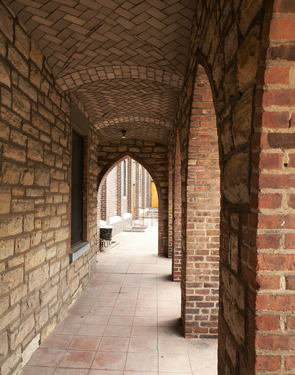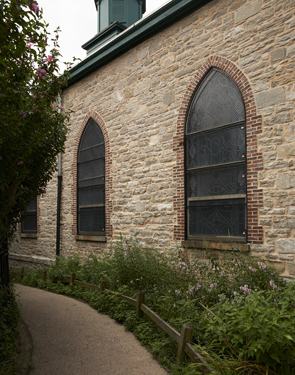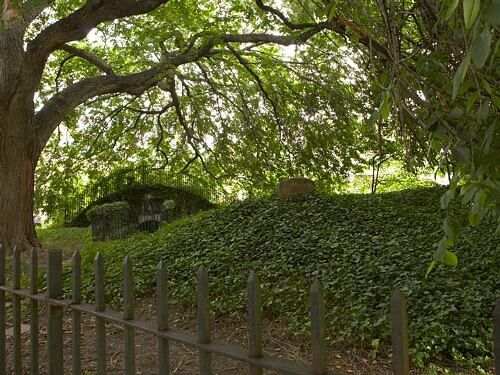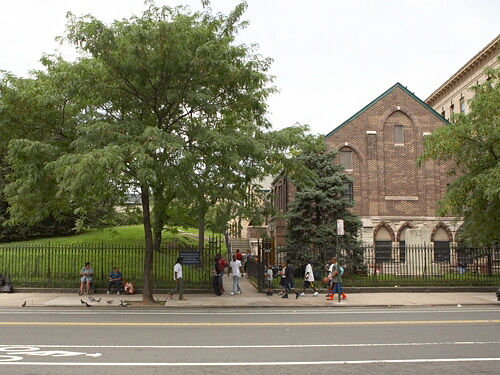St. Ann’s Church (Episcopal) and Graveyard
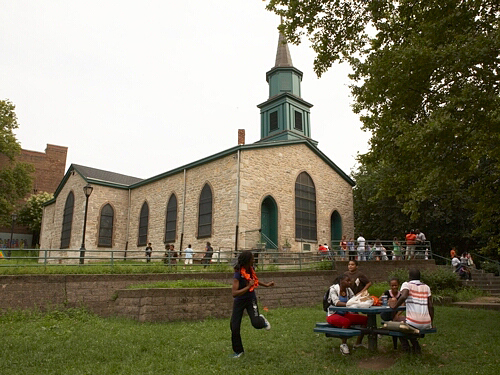
295 St. Ann’s Avenue between E.139 and E.141 streets
Architect unknown
1841
This simple and rough-hewn building, the oldest existing church in the Bronx, stands well back from St. Ann’s Avenue, its low roof following the crest of a green hillside in a shred of park enclosed by tenements. The Landmarks Preservation Commission characteristically describes the setting as “ a forgotten ‘country churchyard’ in the heart of the sprawling city.”
Made of randomly coursed fieldstone, St. Ann’s has the plan of a Latin cross, with a single-story, pitched-roof nave and cross-gabled transept. Six windows punctuate the nave walls with larger stained glass reserved for the transept ends and the south entry. The brick-framed openings have pointed arches, a gesture to the Gothic revival that is answered by a more sustained bow to the Georgian style in the details of the tower—a cube surmounted by an octagonal belfry, both with pilasters and cornices, and a stubby steeple. St. Ann’s has no portico, however, but only a wide flight of steps rising to two arched doorways. At the north end, connecting to the original apse, is a more recent parish house, used today for an active community program, from which an arcade leads to downhill steps. In an iron-fenced plot to the southeast of the church entrance are low, grass-covered mounds, family vaults of the Morris family, contributing to the primordial air of the church and site.
The church was built on the grounds of Morrisania, a 1,900-acre manor that stretched from the Harlem River nearly to the Bronx River, and as far north as today’s Crotona Park. At its height in the Eighteenth Century, Morrisania sold grain ground in its own mills, livestock that had grazed in its fields, and iron forged in its foundry. The lords of the manor, the distinguished Morris family, included a royal governor of New Jersey (cf. “Morristown”) as well as important figures of the American Revolution. Lewis Morris III, signer of the Declaration of Independence, and Gouverneur Morris, who provided the final text of the Constitution, are both buried at St. Ann’s. (Lewis, assured of the virtues of his estate, proposed that the Continental Congress use it as the site for the new national capital.)
Although Morrisania declined after a devastating occupation by British troops during the Revolutionary War, it remained in the early Nineteenth Century the most significant private holding in what was then lower Westchester. Gouverneur Morris II meant the church he built in 1841 to be a monument to his family. He named it in memory of his mother, Anne Randolph Morris, who is buried in a vault below the altar, and arranged to have his famous father and uncle, along with other family members, re-interred at the site.
But ironically the building of Saint Ann’s marked the end of Morrisania and the green world of lower Westchester. 1841 might be called the year the modern Bronx was born, and Gouverneur Morris II was one of its creators. In the year he built the chapel, Morris sold 200 acres of his estate to Jordan Mott for the foundry town of Mott Haven, the first important industrial development in lower Westchester. In the same year, the New York and Harlem Railroad (of which Morris was Vice President), having bridged the river from Manhattan, pushed its tracks northward—on Morrisania land—to Fordham. Along this earliest train route from New York City, which reached White Plains by 1844, sprang up the new villages (one named “Morrisania”) that were to populate the 23rd Ward on land purchased from the Morris estate.
Gouverneur Morris II became a millionaire, and created a new city, by opening his cherished private realm to the manufacturers and immigrant workers of the modern world. He also opened his family memorial to the growing neighborhood, donating it as a parish church, and stipulating that there always be free pews—unusual at the time—for “all persons coming to the said church to worship.” Morris seems to have anticipated—with what mixed feelings?—that St. Ann’s would some day be an anachronistic country church hemmed-in by busy streets.
David Bady
Photographs:
Abigail McQuade

